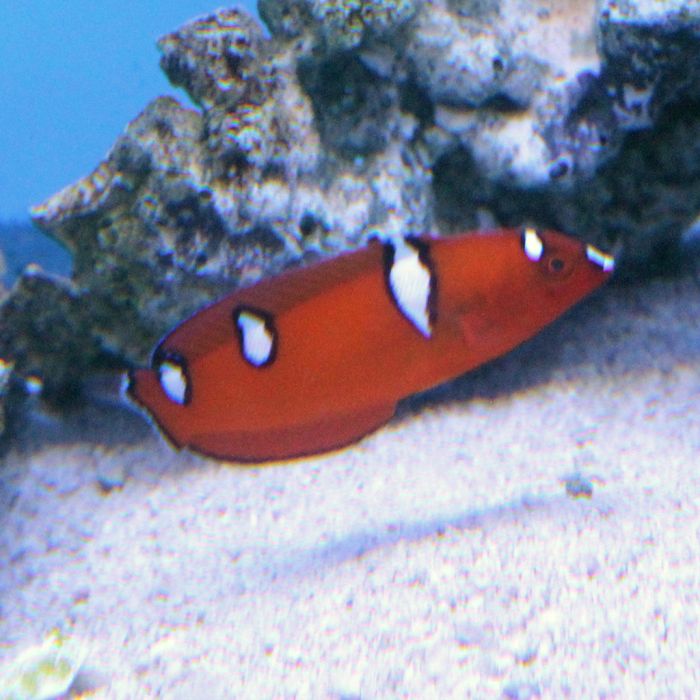Red (Juv) Coris Wrasse (Asia Pacific)
Wrasses are prone to jumping from the aquarium when startled or excited so we recommend a secure lid. They feel most secure when there is plenty of live rock to hide in, as well as open space for swimming. Most species may be kept in pairs or harems as long as they are added together or females first. They do not appreciate living with other species of wrasse, so any aquarium with several species must be large enough and the most peaceful species added first.
They should be fed two to three times a day plenty of high quality meaty items, frozen Mysis shrimp, krill, chopped seafood, marine algae and Spirulina.
Coris wrasses are easy to keep and have active personalities. They have big appetites for invertebrates, especially shrimp; however larger species may attack other crustaceans, snails, worms and starfish among others. They are often employed to eat pests of corals and clams including flatworms, fireworms, Montipora eating nudibranches, and pyramid snails; they may occasionally clean their fish tank mates. They do not bother corals or anemones, but may flip over rocks in their search for food. Large species may also bully or eat small fish, but they are typically nonaggressive with other large fish as long as they have a different shape. Similarly shaped fish are seen as a threat and may be targeted; we do not recommend keeping them with small species such as flasher wrasses.
At night time or when threatened Coris wrasses will dive into the sand for protection. They can even swim under the sand to avoid predators. It is not uncommon to find the wrasse laying on top of the sand to rest during the day. A fine sand bed of at least 2-3 inches will help them feel secure. Rocks should be placed on the aquarium glass and sand poured around them to eliminate the danger of a cave-in when the wrasse dives in.
The Red Coris is also known as the Yellow Tail coris for its bright lemon yellow caudal fin. Its body is a deep rusty orange decorated with navy blue spots and fiery orange fins. Juveniles are an intense tangerine orange with white tiger stripes along its back outlined in pure black and a transparent tail. Mature males have a light green band on the body like a belt, just above where its anal fin starts. Young fish are very similar to the Formosa wrasse but are overall brighter. It grows to 14 inches and needs an aquarium of at least 180 gallons.
Customers who bought this also purchased
 Naso Tang (Asia Pacific)Out of stock
Naso Tang (Asia Pacific)Out of stock
















